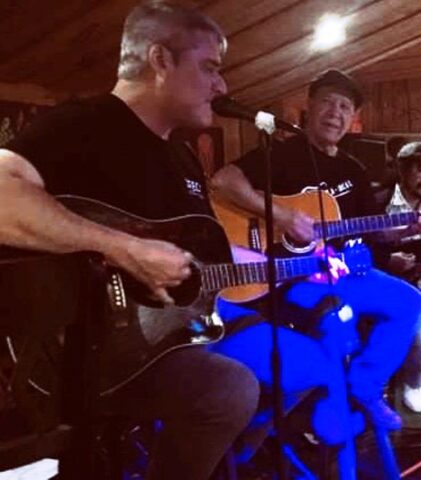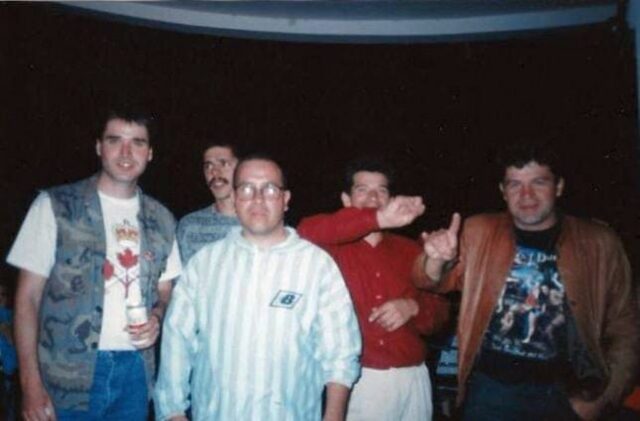For those interested in appreciating it, Costa Rica has enjoyed an exciting history when it comes to its original pop/rock bands and this subculture has been active since the 1970s. Some notable groups include Abracadabra,Via Libre,Los Hermanos Vargas, Ghandi, Café con Leche and Suite Doble to name just a few. Each band left its mark on Costa Rica’s music scene and a few of them are still active today. Additionally, small but vibrant heavy metal and punk rock scenes have been active in the country for many years. All of these bands pride themselves on composing, performing and recording original music.




International bands performing in Costa Rica have sometimes given local bands the chance to open for them and over the years many rock festivals have taken place with a mix of Costa Rican and international artists performing. Iron Maiden performed in Costa Rica three times and helped pave the way for more top international rock bands to include Costa Rica on their tours.The original pop/rock scene here gradually matured and gained a higher profile over time but few Costa Rican bands broke through to international fame. One exception was Debbie Nova who grew up in Escazu and moved to Los Angeles when she was 17. Among her many musical successes Debbie earned a number one dance hit and six Latin Grammy nominations.

My connection with the Costa Rican rock scene was mainly through my involvement with a band called Anestesia Local, a kind of garage band that was formed by a group of high school buddies from San Marcos de Tarrazu. Coming from a region best known for its great coffee and beautiful mountain landscapes, the band’s main claim to fame is that it was the first rock band in the Zona de los Santos. Luckily, the fact that I was Canadian did not bother the band members and I was invited to join Anestesia Local in mid 1994 as its guitarist and lead singer of English songs. Another singer, known as Popocho sang the Spanish songs. We clicked immediately and I was attracted to the band’s musical style which combined original songs and a few covers from bands like REM, Midnight Oil, Black Sabbath and Los Heroes de Silencio. I was happy and motivated to be jamming with a band again as I had not been musically active since leaving Canada in 1992 after my band New Internationalists broke up.
Anestesia Local recorded its first single in 1995 called Nuclear Man with Prisionero as the B side, which debuted live on a Channel 7 Teletica Sunday afternoon variety show called Fantastico. It was a lip synced performance and was a heady, off the scale experience for the band being presented to the entire country on TV. It was a particular challenge for our drummer Gallina. Gallina is the noisiest drummer I have ever played with and pretending to play the drums silently was not his style. At all of our gigs, no matter how small the venue, he would have at least 3 microphones on his drum set which I would switch off when he was not looking. This game went on for years.
The Fantastico TV performance was a turning point for the band, ( some have even jokingly referred to it as our Ed Sullivan Show moment) and a year later we signed a publishing deal with Sony Music Central America which had its offices in Moravia. Sadly, the record label was not committed to the band and Anestesia Local songs would never be used in dog food or Cerveza Imperial commercials.Such is the fickle nature of the music business.

Thanks to receiving heavy airplay on Radio Cultural Los Santos 88.3 FM another of our songs achieved cult status. Chupacabras was a Tex-Mex punk mashup about the bloodsucking monster that according to legend, and an episode of the X Files,lurked in the countryside throughout Latin America in the 1990s. There were some unverified sightings in the mountains above San Pablo Leon Cortez which kept farmers and their livestock on edge during that time period.
After the departure of two band members in the late 90s ( Popocho, and Juan de Dios), the band unsteadily rocked on as a trio until 2011 where at a triumphant performance in San Pablo Leon Cortez ( Leco’s) it opened for a then popular cover band Los Tortugas. At gigs during that stage in Anestesia Local’s history the audiences could sometimes be heard singing along to the band’s original songs, which as I recall resulted in Los Tortugas forcing us to cut our set short. It’s not correct rock protocol for the opening band to blow the headliner off the stage. But we had home ice advantage that night to put it in Canadian terms. It was Anestesia Local’s last show until July 2 2022 when an acoustic version of the band was put together between myself and the principal Spanish songwriter Juan de Dios Mora. Oddly, that evening we performed on a bill that featured 5 punk and Goth bands. The musicians from the other bands appeared curious about seeing us ancianos performing at a gig where the average age of the spectator was probably 23. But it was great to perform some of our favorite old songs and get caught up a bit on what was going on in the current music scene in Los Santos. As a surprise bonus our drummer Gallina showed up at the bar (unannounced and unrehearsed) and played drums with us. It was not a finesse performance but it was LOUD.
Throughout Anestesia’s heyday we performed hundreds of gigs throughout the countryside in the Zona de Los Santos, mostly in rustic dance salons, restaurants, town fairs, the odd beach gig ( the Manuel Antonio and Jaco ones were the most infamous) and sometimes on the backs of coffee trucks (with a portable power generator ) for migrant coffee workers. We did our best to present ourselves as upstanding citizens in public as rock music and rock musicians in general were viewed with some suspicion and unease by some people in Los Santos at that time.
There was never any violence at our gigs. The only exception was one unfortunate after-gig incident in the San Marcos suburb El Rodeo where some patrons exiting the bar decided it was the right time to throw rocks at police cars that had been called in for some reason.The cops retreated and no arrests were made as far as I remember.
Another memorable gig was in a tiny packed cantina in the town of Llano Bonito. The bar was perched on the edge of a cliff with wobbly wooden stilts holding it up.( when I visited the bathroom the view out the “window” was terrifying). The crowd was headbanging like crazy and the floor was vibrating and kind of flexing in a very weird way. It felt like the building was going to collapse at any minute so I stopped the band midsong and switched to Stairway to Heaven to calm everyone down. The Llano Bonito crowd was awesome but for safety reasons I asked our booking agent ( Gallina) to not book us at that particular cantina again.
Doing benefit gigs for the Catholic Church in the town plaza in San Marcos helped us maintain our upstanding public citizen image. Another memorable gig was near Santa Maria de Dota and featured a radio link-up with Zona de Los Santos Costa Ricans residing in New Jersey. Interestingly, these listeners were some of our most loyal fans and purchasers of our cassette /CD. I was never clear who was promoting our music up there. We received invitations to perform for the Tico community in New Jersey but unfortunately, the plans never crystallized.
Anestesia Local did a number of concerts in theaters and bars in San Jose as well as some memorable beach gigs but our bread and butter was performing in the Zona de Los Santos. That’s where the identity and mystique of the band originated from and that’s where people cared about Anestesia Local.
Some people still do, as I usually experience when I walk through the streets of San Marcos receiving friendly shouted saludos from passing cars, “Anestesia Local!” or being greeted with phrases like, “Que paso con Anestesia Local?” and ¿Cuándo van a volver a tocar?
I split off from the band to pursue solo performing and recording and while Anestesia Local was inactive we observed with interest how new generations of bands were forming in Los Santos who had seen or heard about us and had gotten inspired to create and perform their own kinds of rock music. Anestesia Local’s musical success was limited to a cult following but its cultural impact in the Zona de los Santos is undeniable. I was pleasantly surprised before our recent acoustic gig at La Cueva in Santa Maria de Dota, to be interviewed by a University of Costa Rica anthropology Masters student who is doing a research project on the impact of rock music and Anestesia Local in the Zona de Los Santos.
I guess if you can’t make a band successful commercially, having a lasting cultural impact is a good consolation prize.This December a documentary film about the history of the band will be premiered and Juan de Dios Mora and I will return to the stage one more time for an acoustic performance to mark the occasion. It’s possible some of the other original members will show up too.Hopefully, they will tell us in advance so we can rehearse.
Maybe it’s time for Anesthesia Local to write a new chapter in its history. As I write this, all of the members are still alive, so there is still hope. Unless we get killed by a Chupacabras…

For those who have experienced shifts in consciousness and know that more peace, joy, and love awaits in a better living environment. A bold shared vision. A living community and hub for innovation. A sustainable ecosystem for living and working. A model for the new future.
